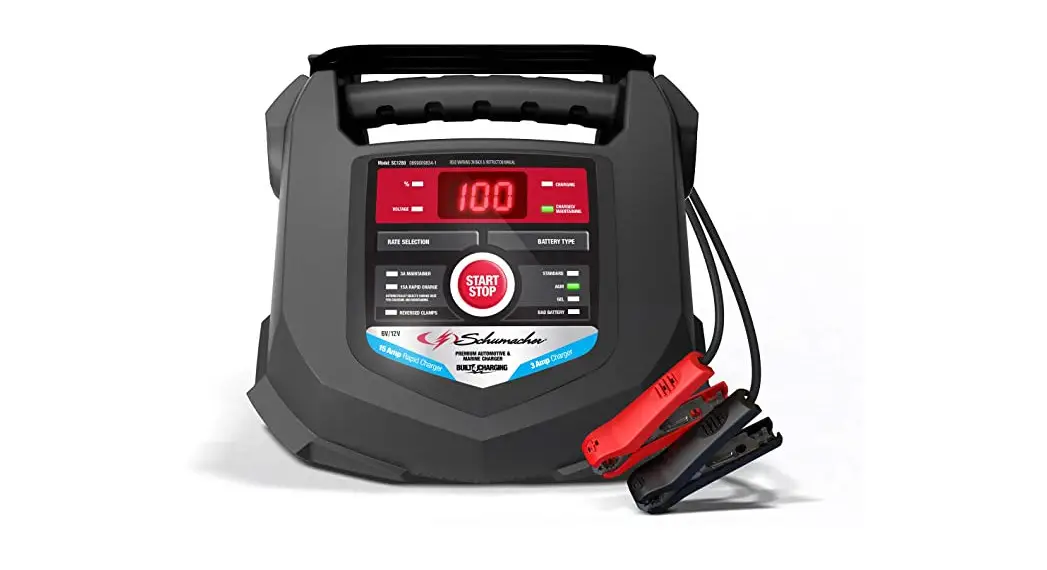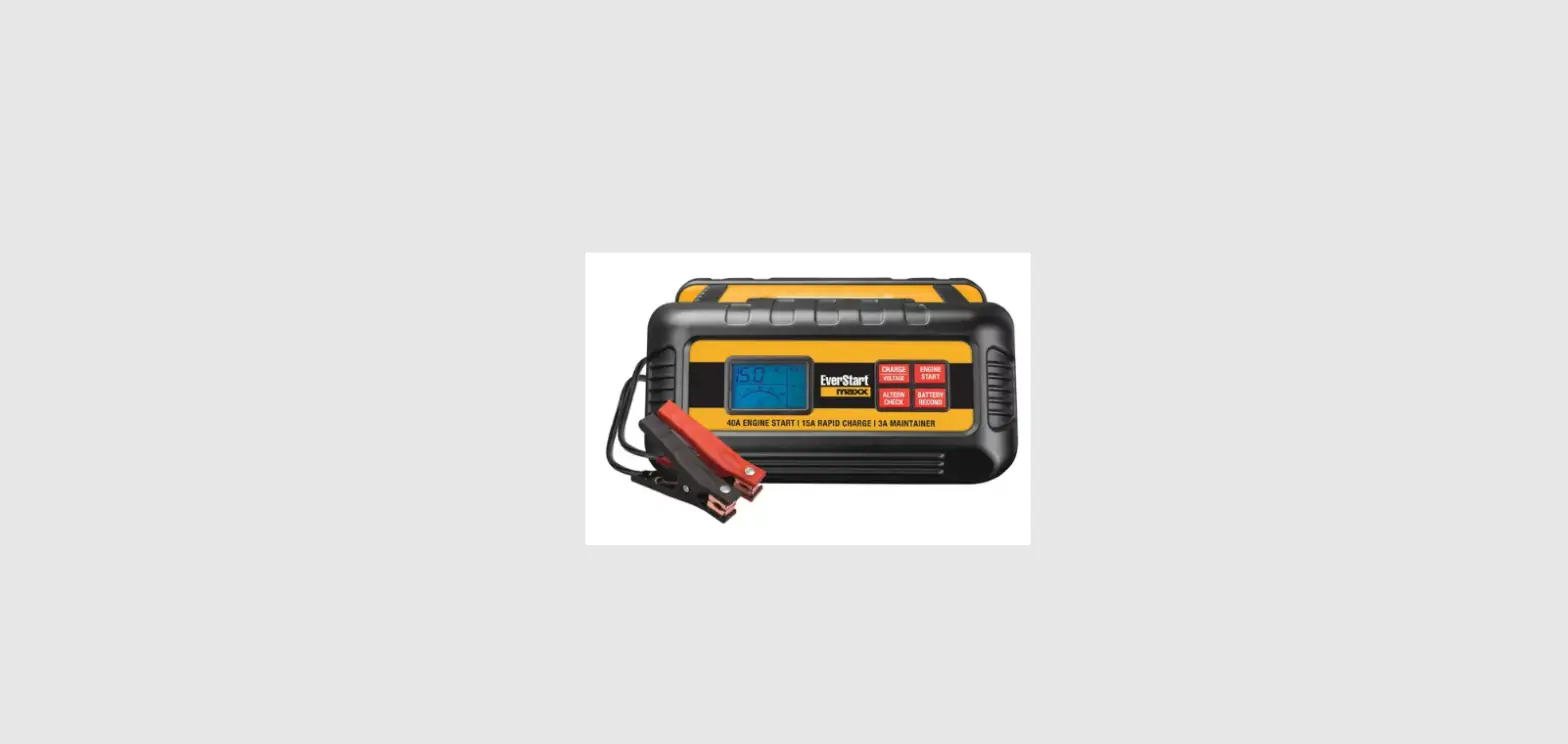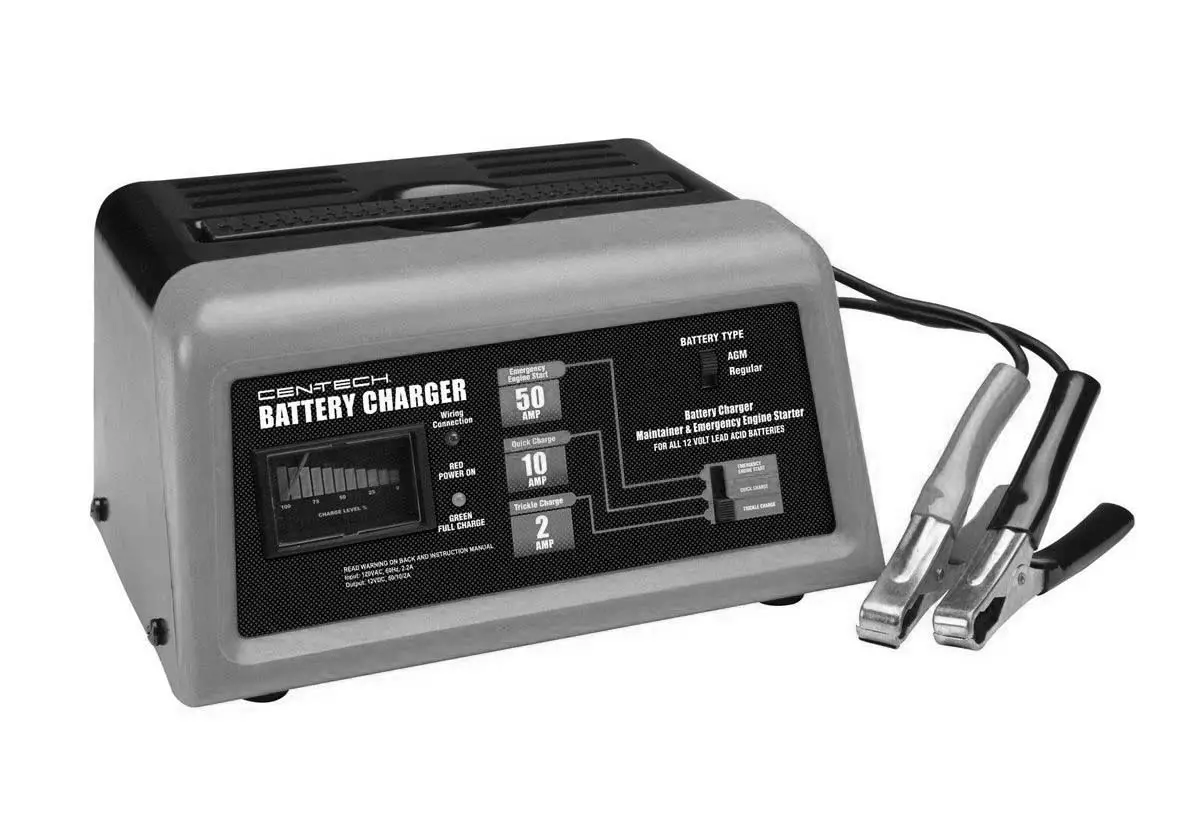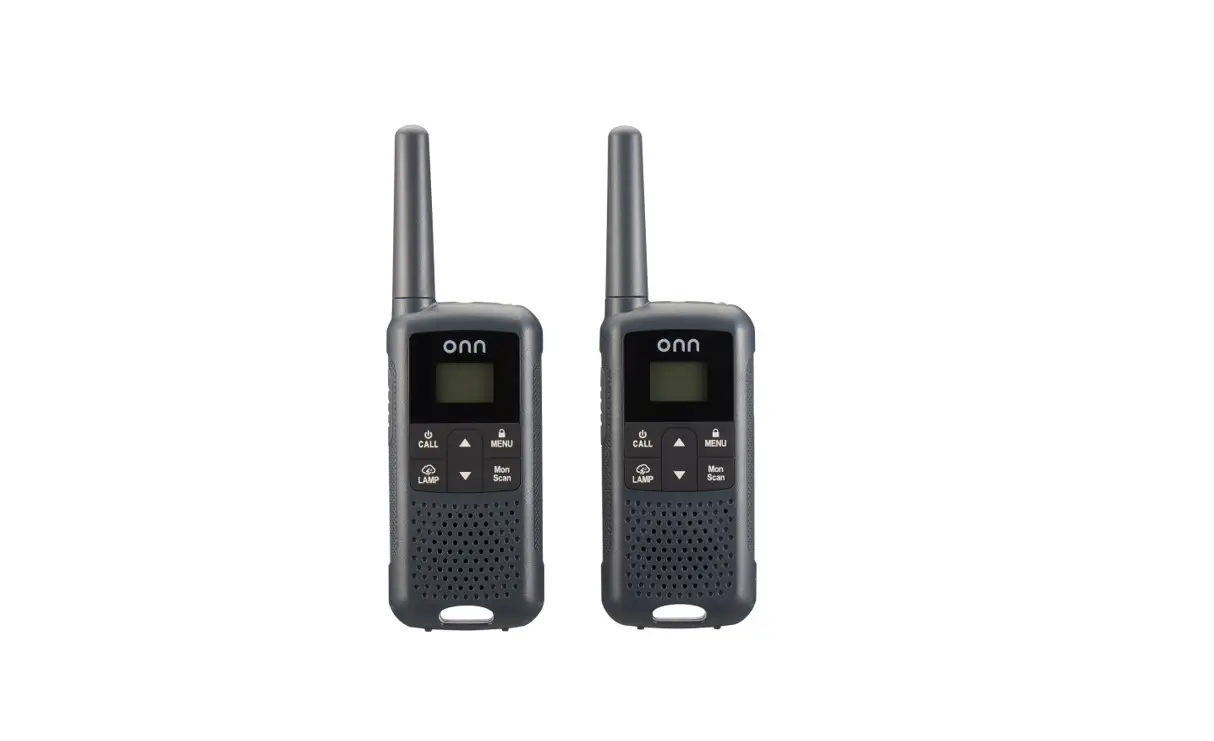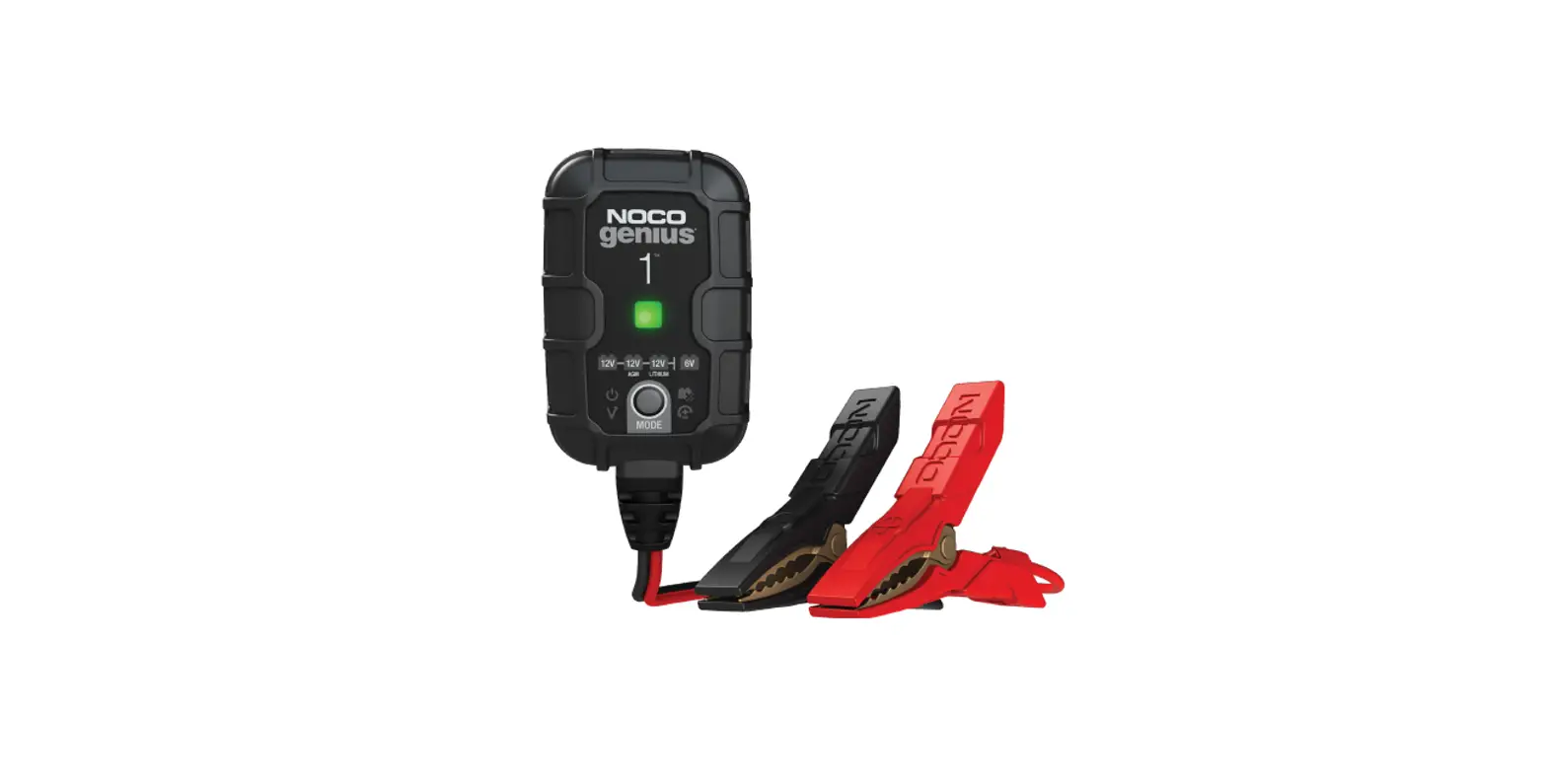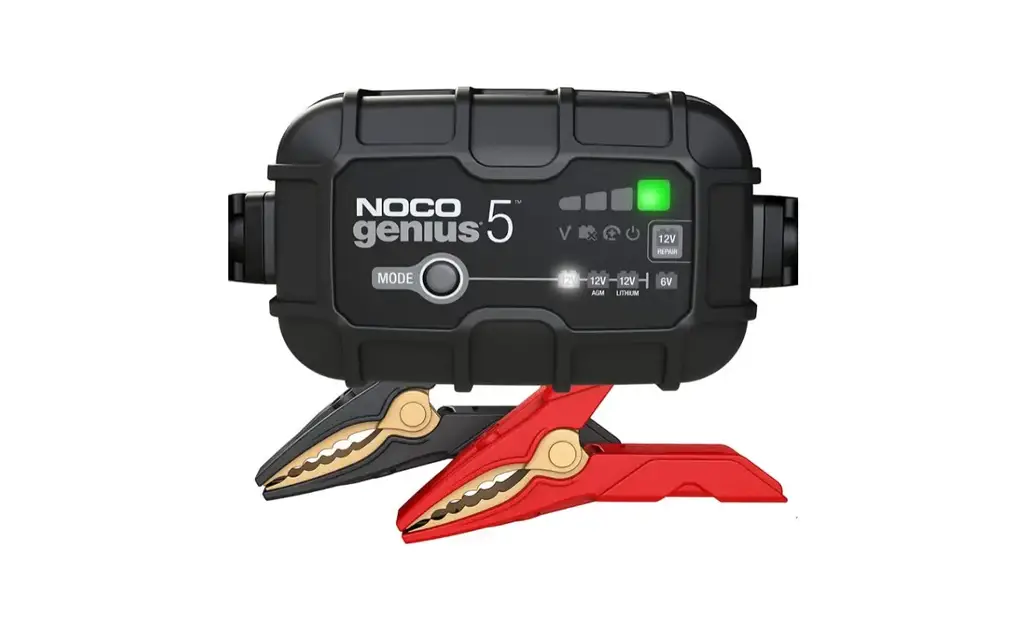Schumacher Battery Charger

Schumacher Battery Charger
PLEASE SAVE THIS OWNERS MANUAL AND READ IT BEFORE EACH USE. This manual will explain how to use the battery charger safely and effectively. Please read and follow these instructions and precautions carefully.
IMPORTANT SAFETY INSTRUCTIONS
SAVE THESE INSTRUCTIONS
- This manual contains important safety and operating instructions.
- Keep out of reach of children.
- Do not expose the charger to rain or snow.
- Use of an attachment not recommended or sold by the battery charger manufacturer may result in a risk of fire, electric shock or injury to persons.
- To reduce the risk of damage to the electric plug and cord, pull by the plug rather than the cord when disconnecting the charger.
- An extension cord should not be used unless absolutely necessary. Use of improper extension cord
could result in a risk of fire and electric shock. If an extension cord must be used, make sure:
• The pins on the plug of the extension cord are the same number, size and shape as those of plug-on charger.
• The extension cord is properly wired and in good electrical condition.
• The wire size is large enough for the AC ampere rating of charger as specified in section 8. - Do not operate the charger with a damaged cord or plug – replace the cord or plug immediately.
- Do not operate charger if it has received a sharp blow, been dropped, or otherwise damaged in any way;
take it to a qualified service person. - Do not disassemble the charger; take it to a qualified serviceman when service or repair is required. Incorrect
reassembly may result in a risk of electric shock or fire. - To reduce the risk of electric shock, unplug the charger from the outlet before attempting any maintenance or
cleaning. Turning off controls will not reduce this risk. - WARNING: RISK OF EXPLOSIVE GASES.
- WORKING IN VICINITY OF A LEAD-ACID BATTERY IS DANGEROUS. BATTERIES GENERATE EXPLOSIVE GASES DURING NORMAL BATTERY OPERATION. FOR THIS REASON, IT IS OF UTMOST IMPORTANCE THAT YOU FOLLOW THE INSTRUCTIONS EACH TIME YOU USE THE CHARGER.
- To reduce the risk of battery explosion, follow these instructions and those published by battery manufacturer and manufacturer of any equipment you intend to use in vicinity of the battery. Review cautionary markings on these products and on the engine.
PERSONAL SAFETY PRECAUTIONS
- Consider having someone close enough by to come to your aid when you work near a lead-acid battery.
- Have plenty of fresh water and soap nearby in case battery acid contacts skin, clothing, or eyes.
- Wear complete eye protection and clothing protection. Avoid touching eyes while working near the battery.
- If battery acid contacts skin or clothing, wash immediately with soap and water. If acid enters eye,
immediately flood eye with running cold water for at least 10 minutes and get medical attention immediately. - NEVER smoke or allow a spark or flame in the vicinity of the battery or engine.
- Be extra cautious to reduce risk of dropping a metal tool onto the battery. It might spark or short-circuit a battery or another electrical part that may cause an explosion.
- Remove personal metal items such as rings, bracelets, necklaces, and watches when working with a lead-acid battery.
A lead-acid battery can produce a short-circuit current high enough to weld a ring or the like to metal, causing a severe burn. - Use charger for charging only LEAD-ACID (STD, AGM or GEL) rechargeable batteries. It is not intended to supply power to a low voltage electrical system other than in a starter-motor application.
Do not use a battery charger for charging dry-cell batteries that are commonly used with home appliances.
These batteries may burst and cause injury to persons and damage to property. - NEVER charge a frozen battery.
PREPARING TO CHARGE
- If necessary to remove the battery from the vehicle to charge, always remove the grounded terminal from the battery first. Make sure all accessories in the vehicle are off, so as not to cause an arc.
- Be sure area around the battery is well ventilated while the battery is being charged.
- Clean battery terminals. Be careful to keep corrosion from coming in contact with eyes.
- Add distilled water in each cell until battery acid reaches the level specified by the battery manufacturer. Do not
overfill. For a battery without removable cell caps, such as valve-regulated lead-acid batteries, carefully follow the manufacturer’s recharging instructions. - Study all battery manufacturer’s specific precautions while charging and recommended rates of charge.
- Determine voltage of battery by referring to car owner’s manual and make sure that output voltage selector switch is set at the correct voltage. If the charger has an adjustable charge rate, charge the battery initially at the lowest rate.
CHARGER LOCATION
- Locate charger as far away from battery as DC cables permit.
- Never place charger directly above battery being charged; gases from battery will corrode and damage the charger.
- Never allow battery acid to drip on the charger when reading electrolyte specific gravity or filling the battery.
- Do not operate chargers in a closed-in area or restrict ventilation in any way.
- Do not set a battery on top of the charger.
DC CONNECTION PRECAUTIONS
- Connect and disconnect DC output clips only after setting any charger switches to the “off” position and removing the AC cord from the electric outlet. Never allow the clips of the charger to touch each other. Clips may be energized and they may spark.
- Attach clips to the battery and chassis, as indicated in sections 6 and 7.
FOLLOW THESE STEPS WHEN THE BATTERY IS INSTALLED IN THE VEHICLE
WARNING: A SPARK NEAR THE BATTERY MAY CAUSE A BATTERY EXPLOSION. TO REDUCE THE RISK OF A SPARK NEAR THE BATTERY:
- Position AC and DC cords to reduce risk of damage by the hood, door, or moving engine part.
- Stay clear of fan blades, belts, pulleys, and other parts that can cause injury to persons.
- Check the polarity of battery posts. POSITIVE (POS, P, +) battery post usually has larger diameter than NEGATIVE (NEG, N, –) post.
- Determine which post of battery is grounded (connected) to the chassis. If negative post is grounded to chassis (as in most vehicles), see (6.5). If a positive post is grounded to the chassis, see (6.6).
- For a negative-grounded vehicle, connect POSITIVE (RED) clip from battery charger to POSITIVE (POS, P, +) ungrounded post of the battery. Connect NEGATIVE (BLACK) clip to vehicle chassis or engine block away from battery. Do not connect clip to carburetor, fuel lines, or sheet-metal body parts. Connect to a heavy gauge metal part of the frame or engine block.
- For a positive-grounded vehicle, connect the NEGATIVE (BLACK) clip from the battery charger to the NEGATIVE (NEG, N, –) ungrounded post of the battery. Connect POSITIVE (RED) clip to vehicle chassis or engine block away from the battery. Do not connect clip to carburetor, fuel lines, or sheet-metal body parts. Connect to a heavy gauge metal part of the frame or engine block.
- When disconnecting the charger, turn the switch to off, disconnect AC cord, remove clip from the vehicle chassis, and then remove clip from the battery terminal.
- See Calculating Charge Time for the length of charge information.
FOLLOW THESE STEPS WHEN THE BATTERY IS OUTSIDE THE VEHICLE
WARNING: A SPARK NEAR THE BATTERY MAY CAUSE A BATTERY EXPLOSION. TO REDUCE THE RISK OF A SPARK NEAR THE BATTERY:
- Check the polarity of battery posts. POSITIVE (POS, P, +) battery post usually has a larger diameter than
NEGATIVE (NEG, N, –) post. - Attach at least a 24-inch-long 6-gauge (AWG) insulated battery cable to NEGATIVE (NEG, N, –) battery post.
- Connect POSITIVE (RED) charger clip to POSITIVE (POS, P, +) post of the battery.
- Position yourself and the free end of the cable as far away from the battery as possible – then connect the NEGATIVE (BLACK) charger clip to free end of the cable.
- Do not face battery when making the final connection.
- When disconnecting the charger, always do so in reverse sequence of connecting procedure and break first connection while as far away from battery as practical.
- A marine (boat) battery must be removed and charged onshore. To charge it on board requires equipment specially designed for marine use.
GROUNDING AND AC POWER CORD CONNECTIONS
- This battery charger is for use on a nominal 120-volt circuit and has a grounded plug. The charger must be grounded, to reduce the risk of electric shock. The plug must be plugged into an outlet that is properly installed and grounded in accordance with all local codes and ordinances. The plug pins must fit the receptacle (outlet). Do not use with an ungrounded system.
- DANGER: Never alter the AC cord or plug provided – if it does not fit the outlet, have a properly grounded outlet installed by a qualified electrician. An improper connection can result in a risk of an electric shock or electrocution.
NOTE: Pursuant to Canadian Regulations, use of an adapter plug is not allowed in Canada. Use of an adapter plug in the United States is not recommended and should not be used. - USING AN EXTENSION CORD
The use of an extension cord is not recommended. If you must use an extension cord, follow these guidelines:
• Pins on plug of the extension cord must be the same number, size, and shape as those of plug-on charger.
• Ensure that the extension cord is properly wired and in good electrical condition.
• Wire size must be large enough for the AC ampere rating of charger, as specified:
Recommended minimum AWG size for an extension cord
| AC input rating. amperes* | Length of cord, feet (m) /AVVG size of cord | ||||||||
| At least | But less than | 25 | (7.6) | 50 | (15.2) | 100 | (30.5) | 150 | (45.6) |
| 0 | 2 | 18 | 18 | 18 | 16 | ||||
| 2 | 3 | 18 | 18 | 16 | 14 | ||||
| 3 | 4 | 18 | 18 | 16 | 14 | ||||
| 4 | 5 | 18 | 18 | 14 | 12 | ||||
| 5 | 6 | 18 | 16 | 14 | 12 | ||||
| 6 | 8 | 18 | 16 | 12 | 10 | ||||
| 8 | 10 | 18 | 14 | 12 | 10 | ||||
| 10 | 12 | 16 | 14 | 10 | 8 | ||||
| 12 | 14 | 16 | 12 | 10 | 8 | ||||
| 14 | 16 | 16 | 12 | 10 | 8 | ||||
| 16 | 18 | 14 | 12 | 8 | 8 | ||||
| 18 | 20 | 14 | 12 | 8 | 6 | ||||
| ‘If the input rating of a charger is given in watts. rather than in amperes, the corresponding ampere rating is determined by dividing the wattage rating by the voltage rating. for example: 1200 watts/120 volts=10 amperes. | |||||||||
ASSEMBLY INSTRUCTIONS
- It is important to fully assemble your charger before use. Remove all cord wraps and uncoil the cables prior to using the battery charger. Follow these instructions for assembly.
PARTS TOOLS NEEDED 1. ¼-20, thread-cutting screws, 4 ea.
2. Wheels, 2 ea.
3. Axle, 1 ea.
4. Nylon spacers, 2 ea.
5. Axle end cap, 2 ea.
6. Right foot, 1 ea.
7. Left foot, 1 ea.3/8˝ nut driver or socket with extension
Hammer - Prepare parts: Remove the charger and parts from the lower case materials and place the charger upside down on a flat surface. To assembly the right foot (6) and left foot (7) and wheels (2), you will need a 3/8˝ nut driver.
- Assemble the wheels and axle: Tap the end cap (5) with a hammer to install on one end of the axle (3). Slide one wheel (2) onto the axle (3) and then one nylon spacer (4). Slide axle (3) through right foot (6) and left foot (7) as shown. Slide the other nylon spacer (4) onto axle and then the other wheel (2). Install the other end cap (5). There should be a one wheel (2) on each end of the axle (3) assembly.
- Attach the right foot and left foot: Attach the right foot (6) to the bottom of the charger and secure it with the two ¼-20 thread-cutting screws (1) provided. Attach the left foot (7), using the other two ¼-20 thread-cutting screws (1) provided.

- Extend the handle from the retracted position by pulling it upward until it locks into place. (Press the small silver buttons inward, if necessary.)
CONTROL PANEL
CHARGE RATE SELECTOR SWITCH
Use the charge rate selector switch to select the charge rate or engine start setting.
Charge – For charging small and large batteries.
Boost – For quickly adding energy to a severely discharged or large capacity battery prior to Engine Start.
Engine Start – Provides additional amps for cranking an engine with a weak or run-down battery.
Always use in combination with a battery.
TIMER
The timer allows you to set a specified time for charging. After the timer expires, the charger stops charging your battery. The main function of the timer is to prevent overcharging while allowing battery time to obtain a satisfactory charge. Monitor the charger and battery. To properly set the timer, you must know the size of the battery (in ampere-hours) or reserve capacity (in minutes) and the state of charge. It is important that you determine the appropriate state of charge of your battery and set the
timer accordingly.
AMMETER
The Ammeter indicates the amount of current, measured in amps, that is being drawn by the battery. As a battery takes on a charge, it draws less current from the charger. Correspondingly, the meter will show less current being drawn by the battery. When the current stops decreasing, the battery is charged. The start area of the meter indicates a high rate of current being drawn from the charger. When cranking an engine, the meter needle will be at the extreme right side of the start area. The 2 amp charge rate may indicate some activity on the meter, although the meter does not have the resolution to display this low rate.
OPERATING INSTRUCTIONS
WARNING: A SPARK NEAR THE BATTERY MAY CAUSE AN EXPLOSION.
CHARGING A BATTERY IN THE VEHICLE
- Turn off all the vehicle’s accessories.
- Keep the hood open.
- Clean the battery terminals.
- Set the timer to the OFF position.
- Lay the AC/DC cables away from any fan blades, belts, pulleys and other moving parts.
- Connect the battery, following the precautions listed in sections 6 and 7.
- Connect the charger to an electrical outlet.
- Select the desired charge rate.
- Set the timer to the charge time; MONITOR THE CHARGER AND THE BATTERY.
- When disconnecting the charger, set the timer to the OFF position, disconnect the charger from the AC
power, remove the clamp from the vehicle chassis, and then remove the clamp from the battery terminal.
CHARGING A BATTERY OUTSIDE OF THE VEHICLE
- Place battery in a well-ventilated area.
- Set the timer to the OFF position.
- Clean the battery terminals.
- Connect the battery, following the precautions listed in sections 6 and 7.
- Connect the charger to the electrical outlet.
- Select the desired charge rate.
- Set the timer to the charge time; MONITOR THE CHARGER AND THE BATTERY.
- When disconnecting the charger, set the timer to the OFF position, disconnect the charger from the
AC power, disconnect the negative clamp, and finally the positive clamp. - A marine (boat) battery must be removed and charged onshore.
USING CHARGE MODE
Use for charging automotive, marine and deep-cycle batteries. Monitor the charging process and stop when the battery is fully charged. Not doing so may damage your battery and result in property damage or personal injury.
USING BOOST MODE
Use Boost mode for quickly adding energy to a severely discharged or large capacity battery prior to Engine Start. Monitor the boosting process.
USING THE ENGINE START FEATURE
Your battery charger can be used to jump-start your car if the battery is low. Follow all safety instructions and precautions for charging your battery. Wear complete eye protection and protective clothing.
WARNING: Using the Engine Start feature WITHOUT a battery installed in the vehicle could damage the vehicle’s electrical system.
NOTE: If you have charged the battery and it still will not start your car, do not use the Engine Start feature, or it could damage the vehicle’s electrical system. Has the battery been checked?
- Set the timer to the OFF position.
- With the charger unplugged from the AC outlet, connect the charger to the battery following the instructions are given in the Follow These Steps When Battery Is Installed In-Vehicle section.
- Plug the charger’s AC power cord into the AC outlet.
- With the charger plugged in and connected to the battery of the vehicle, set the Charge Rate selector switch to the Engine Start position.
- Crank the engine until it starts or 5 seconds pass. If the engine does not start, wait 3 minutes before cranking again. This will recharge the battery.
NOTE: During extremely cold weather, or if the battery is under 2 volts, use Boost or Engine Start for 5 minutes before cranking the engine. - If the engine fails to start, use Boost or Engine Start for 5 more minutes before attempting to crank the engine again.
- After the engine starts, move the timer to the OFF position and unplug the AC power cord before disconnecting the battery clamps from the vehicle.
- Clean and store the charger in a dry location.
NOTE: If the engine does turn over but never starts, there is not a problem with the starting system; there is a problem somewhere else with the vehicle. STOP cranking the engine until the other problem has been diagnosed and corrected.
FAN OPERATION
It is normal for the fan to run while the timer is on. Keep the area near the charger clear of obstructions, to allow the fan to operate efficiently.
CALCULATING CHARGE TIME
When you know the percent of charge and the Amp-hour (Ah) rating of your battery, you can calculate the approximate time needed to bring your battery to a full charge.
Example: Amp hour rating = Reserve capacity + 16/2
NOTE: The Reserve Capacity can be obtained from the battery‘s specification sheet or the owner’s manual.
To calculate the time needed for a charge:
- Find the percentage of charge needed.
- Multiply the Amp-hour rating by the charge needed, and divide by the charge rate.
- Multiply the results by 1.25 to find the total time needed, in hours, to bring the battery to full charge.
- Add an additional hour for a deep-cycle battery.
Example:
Ah rating x % of charge needed x 1.25/Charger Amp setting = hrs of charge
100 (Ah rating) x .50 (charge needed) x 1.25 /20 (Charger Setting)= 3.125 hrs
100 x .50 x 1.25/20 = 3.125
You need to charge a 100 Ampere hour battery for a little more than 3 hrs at the 20 Amp charge rate, using this example.
Use the following table to determine the time it will take to bring a battery to full charge.
The times given are for batteries with a 50% charge prior to recharging.
CCA = Cold Cranking Amps Ah = Amp Hour
RC = Reserve Capacity NR = Not Recommended
| BATTERY SIZE/RATING | CHARGE RATE/CHARGING TIME | ||||
| 10A | 20A | 50A | |||
| SMALL BATTERIES | Motorcycle, garden tractor, etc. | 6-12 Ah | NR | NR | NR |
| 12-32 Ah | NR | NR | NR | ||
| CARS/TRUCKS | 200-315 CCA | 40-60 RC | 21/4-3 h | 1-11/2 h | 25-35 min |
| 315-550 CCA | 60-85 RC | 3-3% h | 11/2-2 h | 1/2-% h | |
| 550-1000 CCA | 85-190 RC | 3%-7 h | 2-31/2 h | %-11/2 h | |
| MARINE/DEEP-CYCLE | 80 RC | 31/2 h | 1%h | NR | |
| 140 RC | 51/2 h | 2% h | NR | ||
| 160 RC | 6h | 3h | NR | ||
| 180 RC | 6% h | 3%h | NR | ||
MAINTENANCE AND CARE
A minimal amount of care can keep your battery charger working properly for years.
- Clean the clamps each time you are finished charging. Wipe off any battery fluid that may have come in contact with the clamps to prevent corrosion.
- Occasionally cleaning the case of the charger with a soft cloth will keep the finish shiny and help prevent corrosion.
- Coil the input and output cords neatly when storing the charger. This will help prevent accidental damage to the cords and charger.
- Store the charger unplugged from the AC power outlet in an upright position.
- Store inside, in a cool, dry place.
- Store the clamps on the storage areas provided on the handle. Do not store the clamps clipped together, on or around metal, or clipped to the cables.
TROUBLESHOOTING
| PROBLEM | POSSIBLE CAUSE | SOLUTION |
| Charger will not turn on when properly connected. | AC outlet is dead. Poor electrical connection. | Check for open fuse or circuit breaker supplying AC outlet. Check power cord and extension cord for the loose-fitting plug. |
| The battery is connected and the charger is on, butis not charging. | Clamps are not making a good connection. | Check for poor connection at battery and frame. Make sure connecting points are clean. Rock the clamps back and forth for a better connection. |
| The charger is making an
audible clicking sound. | Circuit breaker is cycling. The battery is defective. Shorted battery cables or clips. Severely discharged battery, but otherwise, it is a good battery. Reverse connections at the battery. | The settings may be wrong. Check the charger settings. Have the battery been checked?Circuit breaker cycles when the current draw is too high. Check for shorted cables or clips and replace if necessary. The battery may not want to accept a charge due to a run-down state. Allow charging to continue until the battery has a chance to recover sufficiently to take a charge.If more than 20 minutes, stop charging and have the battery checked. Shut the charger off and correct the lead connections. |
| Charger makes a loud buzz or hum. | Transformer laminations vibrate (buzz). Shorted Diode Assembly or Output Rectifier Assembly (hum). | No problem, this is a normal condition. Have charger checked by a qualified technician? |
| Short or no start cycle
when cranking engine. | Drawing more than the Engine Start rate. Failure to wait 3 minutes between cranks. Clamps are not making a good connection. AC cord and/or extension cord is loose. No power at the receptacle. The charger may be overheated. Battery may be severely discharged. | Crank time varies with the amount of current drawn. If cranking draws more than the Engine Start rate, crank time may be less than 5 seconds. Wait 3 minutes of rest time before the next crank. Check for poor connection at battery and frame. Check power cord and extension cord for the loose-fitting plug. Check for an open fuse or circuit breaker supplying an AC outlet.The thermal protector may have tripped and needed a little longer to reset. Make sure the charger vents are not blocked. Wait and try again.On a severely discharged battery, use the 25A Boost setting for 10 to 15 minutes, to help assist in cranking. |
BEFORE RETURNING FOR REPAIRS
For information about troubleshooting, contact customer service for assistance:
[email protected] | www.batterychargers.com | or call 1-800-621-5485
For REPAIR OR RETURN, contact Customer Service at 1-800-621-5485. DO NOT SHIP UNIT until you receive a RETURN MERCHANDISE AUTHORIZATION (RMA) number from Customer Service at Schumacher Electric Corporation.
LIMITED WARRANTY
Go to www.batterychargers.com to register your product online.
SCHUMACHER ELECTRIC CORPORATION, 801 BUSINESS CENTER DRIVE, MOUNT PROSPECT, IL 60056-2179, MAKES THIS LIMITED WARRANTY TO THE ORIGINAL RETAIL PURCHASER OF THIS PRODUCT. THIS LIMITED WARRANTY IS NOT TRANSFERABLE OR ASSIGNABLE.
Schumacher Electric Corporation (the “Manufacturer”) warrants this charger for two (2) years from the date of purchase at retail against defective material or workmanship that may occur under normal use and care. If your unit is not free from defective material or workmanship, the Manufacturer’s obligation under this warranty is solely to repair or replace your product with a new or reconditioned unit at the option of the Manufacturer. It is the obligation of the purchaser to forward the unit, along with proof of purchase and mailing charges prepaid to the manufacturer or its authorized representatives in order for repair or replacement to occur.
The manufacturer does not provide any warranty for any accessories used with this product that are not manufactured by Schumacher Electric Corporation and approved for use with this product. This Limited Warranty is void if the product is misused, subjected to careless handling, repaired, or modified by anyone other than the Manufacturer or if this unit is resold through an unauthorized retailer. The manufacturer makes no other warranties, including, but not limited to, express, implied or statutory warranties, including without limitation, any implied warranty of merchantability or implied warranty of fitness for a particular purpose. Further, the Manufacturer shall not be liable for any incidental, special or consequential damage claims incurred by purchasers, users or others associated with this product, including, but not limited to, lost profits, revenues, anticipated sales, business opportunities, goodwill, business interruption and any other injury or damage. Any and all such warranties, other than the limited warranty included herein, are hereby expressly disclaimed and excluded. Some states do not allow the exclusion or limitation of incidental or consequential damages or length of an implied warranty, so the above limitations or exclusions may not apply to you. This warranty gives you specific legal rights and it is possible you may have other rights which vary from this warranty.
THIS LIMITED WARRANTY IS THE ONLY EXPRESS LIMITED WARRANTY AND THE MANUFACTURER NEITHER ASSUMES OR AUTHORIZES ANYONE TO ASSUME OR MAKE ANY OTHER OBLIGATION TOWARDS THE PRODUCT OTHER THAN THIS WARRANTY.
Schumacher ® and the Schumacher logo are registered trademarks of Schumacher Electric Corporation.
WARRANTY CARD
SAVE ON POSTAGE! ACTIVATE YOUR WARRANTY ONLINE – THE QUICK AND EASY WAY!
Go to www.batterychargers.com to register your product online.
(No internet access? Send in the completed warranty card.)
2 YEAR LIMITED WARRANTY PROGRAM REGISTRATION
- MODEL: _____________________
- DESCRIPTION: ________________________
This is the only express limited warranty, and the manufacturer neither assumes nor authorizes anyone to assume or make any other obligation. There is no other warranty, other than what is described in the product owner’s manual. The warranty card should be submitted within 30 days of purchase. The customer must keep the ORIGINAL receipt because it will be required for any warranty claims. This warranty is not transferable. Send warranty card only.
DO NOT SEND THE UNIT TO THIS ADDRESS FOR REPAIR.
Mail this card to Schumacher Electric Corporation 801 Business Center Drive Mount Prospect, IL 60056-2179
Mount Prospect, IL 60056-2179
- Name ______________________________________________________________
- Street Address _______________________________________________________
- City ________________________________State _________ Zip Code _________
- Phone _____________________Email ___________________________________
- Store Name Where Purchased ___________________ Date of Purchase _________
- Store Location ____________________ UPC Number ________________________
- Serial Number ______________________________________ (SEE PRODUCT)
Serial Number ______________________________________ (SEE PRODUCT)
For faster warranty activation, go to www.batterychargers.com to register your product online.
Frequently Asked Questions
A trickle charger provides a constant current at a low voltage. A smart charger is designed to detect when the battery is fully charged and then switch to a float mode. A smart charger will not overcharge your battery.
An intelligent charger has more sophisticated electronics, which allows it to perform additional functions, such as charging different types of batteries and charging at different rates depending on the condition of the battery. An intelligent charger may also be referred to as a “microprocessor controlled” or “microprocessor controlled advanced” charger.
If your battery has been in storage for more than three months, it should be recharged before use. If your vehicle has been sitting unused for more than three months, you should recharge the battery before attempting to start the engine. If your vehicle has been driven less than 1 mile (1.6 km) after being fully charged, recharge the battery before driving again. If you have just purchased a new battery, you should fully charge it before using it in your vehicle for the first time.
Read all instructions carefully before using this product. 1) Connect the output clips of the smart charger to the corresponding terminals on your battery (see diagram). Make sure that both clips make good contact with their respective terminals. 2) Plug the AC power cord into an AC outlet and switch on the power by pressing down on the rocker switch (see diagram). The red light will come on indicating that power is being supplied to the unit. The green light will come on when the unit enters into float mode monitoring your battery’s state of charge while maintaining it at full capacity (see diagram). The green light will remain lit as long as power is supplied to unit and will turn off when either of these conditions are not met (i.e., unit unplugged or switched off). The red light will blink during charging and remain solid when charging is complete. When charging is complete, remove AC power cord from wall outlet and unplug smart charger from AC outlet before disconnecting clips from terminals on car or other storage device’s battery (see diagram). Do not attempt to disconnect clips while red light is blinking or you may damage your smart charger or car’s electrical system. 3) To maintain proper care for your smart charger, always store it in a dry location when not in use and follow all instructions listed above for use of this product.
With the charger plugged in and connected to the battery of the vehicle, set the Charge Rate selector switch to the Engine Start position. Crank the engine until it starts or 5 seconds pass. If the engine does not start, wait 3 minutes before cranking again. This will recharge the battery.
Charges in 6 to 8 hours. 2 Amp Trickle Charge – charges a small 12 volt battery in 2 to 12 hours. Back-lit, impact-resistant, color-coded meter for easy viewing day or night.
The blinking LED lights indicate different status of charge: Short green flash = less than 80% charged. Long green flash = more than 80% charged. Solid green light = 100% charged.
You may be able to… if the battery is at full charge. Best not try it. A battery charger delivers a few amperes at most. A properly charged battery delivers enough to turn over a starter motor or to melt a steel bar put between the poles
If you see a red light on your charger, it typically means that the charger is working properly and that your battery is charging at the faster, “fast charge” rate. Of course, it’s always important to consult your charger’s manual to be sure.
And then read to red you see the light the red right there i’m not really sure what is that. But it’s on and then okay so that’s the back and that what he said is just turn this on the charge.
When the battery is fully charged the green ready light will come on at this point the charger moves into maintained mode and can be left connected keeping the battery ready for use indefinitely.
Leaving an unattended trickle charger on for too long can overcharge the battery, which will shorten the lifespan of your battery and potentially damage it. It could also lead to overheating, fire, and explosion.
VIDEO
Documents / Resources
 | Schumacher Battery Charger [pdf] Owner's Manual Battery Charger, 105-4, 105-5, 105-8 |
